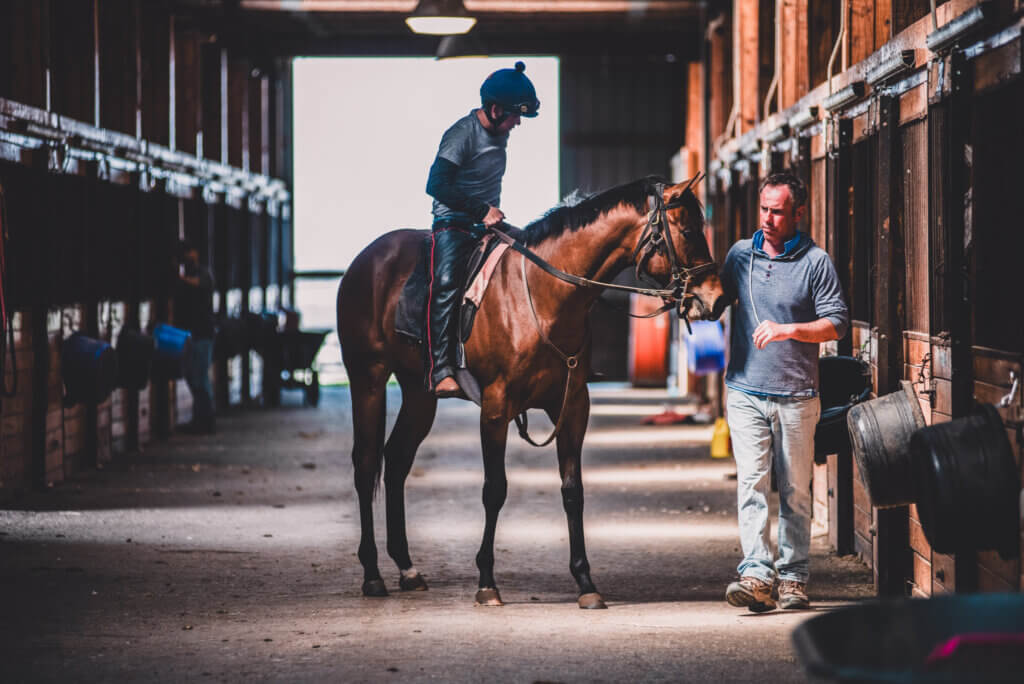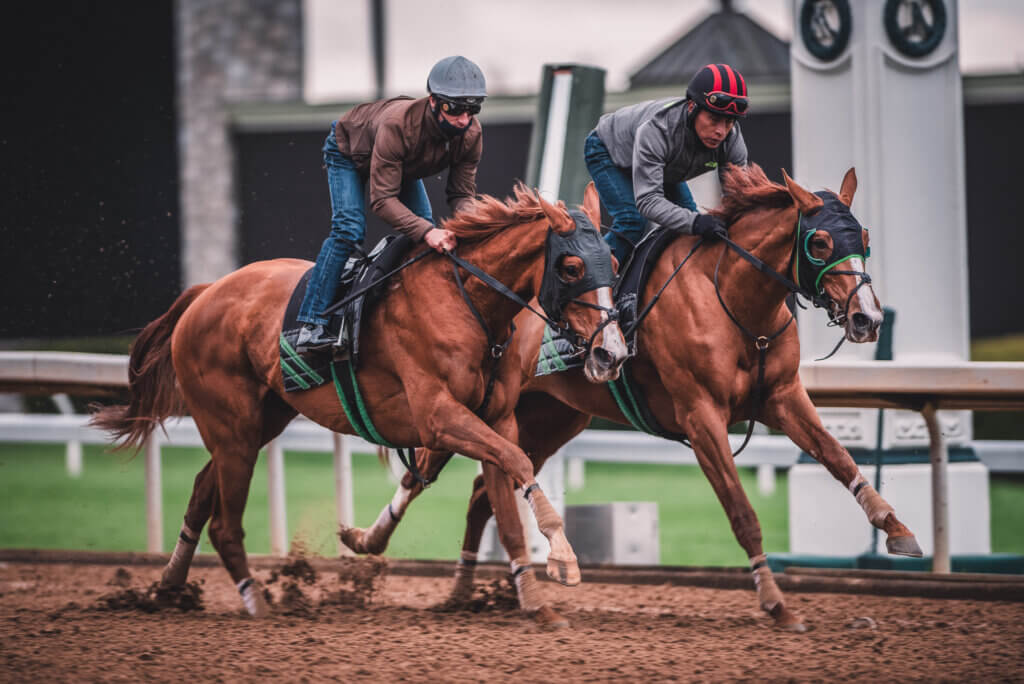Horseracing Integrity & Safety Authority, 2023 Equine Fatalities: HISA’s strategic response. Read the full article here
The absence of a singular explanation for recent equine fatalities at several racetracks across the country is extremely frustrating for the entire sport of thoroughbred racing, for fans and the public, and also for HISA. Consequently, action must be taken in reaction to what we know and what we do not know, for the welfare of thoroughbred horses.
HISA is therefore creating and implementing a strategic response plan which includes the following new and critical initiatives that we believe will either contribute meaningfully to the reduction of equine fatalities or allow further study and analysis for future implementation if confirmed by the data.
1. Create a Track Surface Advisory Group
It has become clear that HISA’s ability to deploy independent racetrack surface experts immediately and on an emergency basis to a crisis zone is an essential need. We believe these moments of crisis require a group of the industry’s most accomplished track surface experts to jointly consider and review any racetrack surface that raises concerns with regard to HISA’s Accreditation standards.
Therefore, HISA has created a Track Surface Advisory Group comprised of dirt, turf and synthetic experts that can be utilized whenever necessary. As of the release of this strategic response plan, this recommendation has been implemented and members of the Track Surface Advisory Group have already been deployed to evaluate the Saratoga Race Course surfaces following the fatalities that occurred there this race season.
2. Create a Blue-Ribbon Committee to Review Data and Make Recommendations Concerning the Introduction of more Synthetic Surfaces to Thoroughbred Racing
Current available data suggests that artificial surfaces may be safer for horses than dirt or turf surfaces. While additional research and analysis is necessary to fully evaluate the potential impact of artificial surfaces on overall equine injury rates, more synthetic surface options should be introduced into Thoroughbred racing.
The New York Racing Association (“NYRA”) has agreed to lead a Blue-Ribbon Committee to evaluate the potential incorporation of synthetic surfaces at America’s premier thoroughbred racetracks. Findings and recommendations will be shared with HISA’s Racetrack Safety Committee and the industry. In addition, HISA will be working with industry representatives to commission a White Paper on the synthetic surface product options currently available on the world market.
3. Data Analysis
The recent fatalities at Churchill Downs, Laurel Park and Saratoga Race Course have raised a myriad of complex and probing questions around the causes of these injury clusters. At this point in horse racing’s evolution, the sport needs to take a broad view of both causes and solutions of equine injury and it is incumbent upon HISA and industry leaders to explore whether any of these theories are supported by data helping us to minimize injuries going forward. To that end, HISA will collaborate with industry stakeholders, including Churchill Downs, to create new data sources, repositories and processes needed to do academic level research and predictive analytics. While this is a long-term endeavor, HISA is engaging in two new initiatives to realize the potential of its systems and its data:
a. Amazon Web Services will be conducting an Equine Health Innovation Workshop this week in Nashville, Tennessee with members of HISA’s leadership team and other industry representatives to bring the group’s vast and varied experience in horse racing to explore and decide on a landmark strategy to converge people, process and technology to substantially impact equine injury rates.
b. HISA is partnering with Palantir Technologies, a leader in artificial intelligence and machine learning, to utilize their category leading software to identify data-driven solutions to improve equine safety. By leveraging this revolutionary technology, HISA hopes to identify factors previously overlooked or not considered that may play a role in mitigating equine injury risks.
The following questions which were repeatedly raised during the course of this investigation provide a starting point for these analyses, though the areas of inquiry will almost certainly expand as additional insights are gained from the data:
i. Are there any common factors in sudden death cases that can provide some insight into how to prevent them going forward?
ii. Are race distances associated with higher or lower injury rates?
iii. Are rainfall amounts during a race meet correlated to equine injury?
iv. Is there any correlation between the racetrack’s base layer and equine injury?
v. Is there any correlation between a sealed track and equine injury?
vi. Would a rule prohibiting running horses with specific poor performance metrics reduce equine injury?
vii. What is the impact of corticosteroid injections to the fetlock and does the data suggest any link between such injections (or the frequency of them) and equine injury?
viii. Would a maximum number of high-speed furlongs (published works and races) either lifetime or within a rolling period reduce equine injury?
ix. Are certain bloodlines or pedigrees associated with higher or lower incidences of injury?
x. Is the absence of a high-speed work on the racetrack prior to a horse racing at that track a contributing factor to injury?
xi. What purse-to-claim price ratio exhibits the lowest injury rate?
xii. Does the data show an optimal time between races to reduce equine injury?
4. Veterinary Protocols
Equine injury prevention, detection and management are critical to preventing equine fatalities.
a. Prevention of racing injuries is facilitated by a strong regulatory veterinary program. HISA’s regulatory veterinary rules are based on existing industry research which has helped identify risk factors for injury in the equine population. Regulatory veterinarians then use clinical history in the post-entry screening process along with pre-race inspection procedures to prevent horses most at risk for injury from competing by flagging those horses for further evaluation.
b. Injury detection is facilitated by improved screening and diagnostic procedures. New screening technologies such as inertial motion sensors and other wearable technologies and objective lameness locator programs can provide trainers additional tools to help identify individual horses that might benefit from enhanced diagnostic imaging. New imaging technologies such as PET scans can help identify musculoskeletal problems while they are still in the prodromal phase. In one equine surgeon’s terms, “[r]adiographs show us what happened. PET scans show us what is happening.” This technology can be used to identify horses experiencing abnormal bone remodeling so that training schedules can be modified before injuries can manifest. This technology is especially effective with regard to the lower limb, in particular the metacarpophalangeal joint4 – where the majority of bony musculoskeletal injuries occur.
i. A plan to evaluate the feasibility in making PET scans accessible both geographically and financially to more racetracks across the country and to be used more regularly when indicated by industry stakeholders;
ii. A research proposal with accompanying funding to study the causes and contributing factors to exercise-associated sudden deaths;
iii. Further support to necropsy laboratories such as the workshop that Dr. Stover and the UC Davis pathology team hosted on August 18- 19, 2023 at the San Bernardino branch of the California Veterinary Diagnostic Lab system, entitled “Racehorse Necropsies to Fulfill Horseracing Integrity and Safety Authority Requirements.” Dr. Stover is also working on a “Necropsy of the Racehorse” handbook for pathologists;
iv. Post-Entry Screening support to HISA racetracks as early data on this initiative indicated its extreme effectiveness;
v. Further engagement and integration of wearable technology to support injury detection; and
vi. Examination by HISA’s Racetrack Safety Committee to determine whether there are any other equine fitness tools, such as equine aqua treadmills, aquacizers, pools, treadmills and eurocizers worthy of investment and deployment to maintain horse health.
5. Anti-Doping and Medication Control (ADMC)
HISA’s ADMC program, managed by the Horseracing Integrity and Welfare Unit (“HIWU”), did not go into effect until May 22, 2023 and, consequently, additional time is required before HISA can measure whether the data illustrates that the implementation of the program has had an effect on equine injury. Nevertheless, there are steps that can be taken in the near term that are complementary to the ADMC program itself, including the following:
a. Horse Sales
Many have questioned whether the industry would be better served if antidoping and medication control protocols were consistent throughout the lifetime of a horse. For that reason, HISA has initiated discussions with sales companies, Fasig-Tipton, Keeneland, and Ocala Breeders’ Sales Company toward the goal of entering into voluntary agreements to more effectively align and coordinate our respective ADMC programs throughout the lifetime of a horse.
b. Injections
HISA has proposed a new rule requiring a 30-day standdown time from racing and a 14-day standdown time from workouts after a horse receives a corticosteroid intra-articular injection into the fetlock joint. Approximately 50% of musculoskeletal fatalities are attributable to an injury to the fetlock joint and therefore protecting the fetlock joint is a HISA priority. The administration of corticosteroids to the fetlock joint can alleviate inflammation and pain associated with abnormalities that promote injury in this joint, leading to potential overexertion, injury, and catastrophic breakdown. Introduction of a mandatory standdown time from training and racing activities provides an additional safety margin for horses to recover from abnormalities that promote injury and reduce susceptibility to catastrophic injury to this high-risk joint.
This proposed rule, along with the other proposed modifications to HISA’s Racetrack Safety Rules, will be submitted to the Federal Trade Commission (“FTC”) later this month. This rule will take effect upon approval by the FTC.
c. Reporting Compliance
Many stakeholders, including those calling into HISA’s confidential tip line, have questioned whether Covered Persons are properly and accurately reporting corticosteroid injections. Therefore, HISA is exploring ways to address those concerns, including: (i) a designated area at the racetrack for all intra-articular injections to be administered; or (ii) the requirement of a 7 short video of the veterinarian performing the intra-articular injection to be uploaded with the injection report. Oaklawn Park has volunteered to implement the designated treatment area concept for their race meet beginning in December 2023. The pilot program will be used to determine the feasibility and value of this approach, as well as to identify challenges that would need to be resolved for it to be successful.
6. Racetrack Safety Rule Changes
In addition to the proposed changes to the Racetrack Safety Rules below, HISA will be stringently enforcing its rules around fatality notices, necropsy reports, injury reporting, and the registration rule following the findings determined in the Churchill Downs Investigation. To better protect horses, the following rule changes have been proposed in the latest set of revisions to HISA’s Racetrack Safety Rules and will be implemented if approved by the FTC:
a. Rule 2015 – Racehorse Epidemiology Database and Study
This rule identifies all sources of records and data that will be collected by HISA for purposes of developing a nationwide database of Covered Horse safety, performance, health, and injury information, as required by the Horseracing Integrity and Safety Act.
b. Rule 2117 – Provisional Suspension of Racetrack Accreditation
HISA will be permitted to issue a show cause notice concerning a provisional suspension of a racetrack’s accreditation if HISA has reasonable grounds to believe that the conditions or operations of a racetrack present an imminent danger to the health, safety, or welfare of Covered Horses or Riders due to a violation of the Racetrack Safety Rules.
c. Rule 2131 – Safety Director
This rule will reduce the amount of time from 72 hours to 24 hours for the Safety Director to report a fatality to HISA. 8
d. Rule 2134 – Regulatory Veterinarian Tracks
will be required to have 2 regulatory veterinarians present during all live racing, unless doing so would present an undue hardship to the track, as determined by the Racetrack Safety Committee.
e. Rules 2137-2139 – Horseshoe Inspector
This set of new rules will require tracks to employ a horseshoe inspector, who will be responsible for inspecting every Covered Horse entered in a race on the day of the race.
f. Rule 2142 – Assessment of Racing Soundness This rule will require the trainer of any Covered Horse that has not raced for 150 or more days to complete a Layoff Report and submit it to HISA prior to entry.
g. Rule 2168 – Equine Ambulance More stringent requirements for minimum capabilities of the equine ambulance have been added to enhance emergency response.
h. Rule 2170 – Necropsies Racetracks will be required to have a standard operating protocol that contains the components set out in the rule, including sound infection control practices and procedures for reporting necropsy findings. Tracks are required to coordinate with a diagnostic laboratory to perform necropsies. Necropsy findings must be reported in a manner prescribed by HISA. The ancillary test results and final report must be submitted to HISA within 72 hours.
i. Rule 2272 – Shock Wave Therapy
This rule will impose increased penalties for failure to report shock wave therapy within 48 hours.
j. Rule 2287 – Provisional Suspension of Registration
HISA will be permitted to issue a show cause notice concerning a provisional suspension of a Covered Person’s registration if HISA has reasonable grounds to believe that the actions or inactions of a Covered Person present an imminent danger to the health, safety, or welfare of Covered Horses or Riders due to a violation of the Racetrack Safety Rules.
CONCLUSION
The fatalities at Churchill Downs, Laurel Park and Saratoga Race Course identify a number of potential factors that warrant implementation or further study and industry discussion. The inevitable recognition that horse fatalities are almost always multifactorial means that the response must similarly be multi-responsive.
No one entity or issue can on its own guarantee a meaningful reduction in equine injuries. Horse racing has reached an “all-hands-on-deck” moment requiring more than ever a truly unified effort for the horses.
All stakeholder groups must participate in bringing the appropriate recommendations to fruition and being part of the solution. This includes racetracks, horsemen, veterinarians, breeders, consignors, state racing commissions, track superintendents and everyone else who participates in and benefits from thoroughbred horse racing. HISA believes that the recommendations set forth in this strategic response plan have the genuine potential to reduce equine injury and HISA will steadfastly move forward to implement them for the benefit of horse and rider welfare



